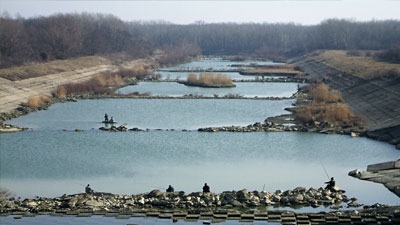Romania faces severe threats from earthquakes, floods and landslides whose devastating consequences include human and economic loss. In the last hundred years, 14 earthquakes of magnitude VII or greater and eight major floods affected almost two million people. Property loss from earthquakes and floods is estimated at around US$ 400 million per year.
Romania lies on the Vrancea fault that forms an ellipse stretching from the northeast to the southwest of the country. Proximity to the fault and poor soils make Bucharest Europe's highest seismic risk capital city and one of the 10 most vulnerable cities in the world. Over 35% of Romanians, or 65% of the urban population, is exposed to seismic hazards from the Vrancea fault.
Records show that large magnitude earthquakes occur on the Vrancea zone with regularity—Romania has more than 30 quakes a year with a magnitude of 3 or more —and a large magnitude earthquake is anticipated in the coming years. A repeat of the devastating 1977 earthquake, which measured 7.2 on the Richter scale and killed over 1,500 people, would result in US$ 7.45-17 billion in estimated losses, roughly equivalent to 20-45% of the Romanian GDP. Such a loss would be catastrophic for the Romanian economy.
The World Bank’s Hazard Risk Mitigation and Emergency Preparedness Project, which came to a close at the end of June 2012, assisted the Government of Romania in reducing the environmental, social, and economic vulnerability to natural disasters and catastrophic mining accidental spills of pollutants through:
- strengthening the institutional and technical capacity for disaster management and emergency response through upgrading communication and information systems;
- implementing specific risk reduction investments for floods, landslides and earthquakes;
- improving the safety of selected water-retention dams;
- improving on a pilot basis the management and safety of tailings dams and waste dump facilities.
“One dollar invested in mitigation saves US$ 7 in post-reconstruction efforts,” said World Bank Sr. Irrigation Specialist Gabriel Ionita, the Task Team Leader for the project.

